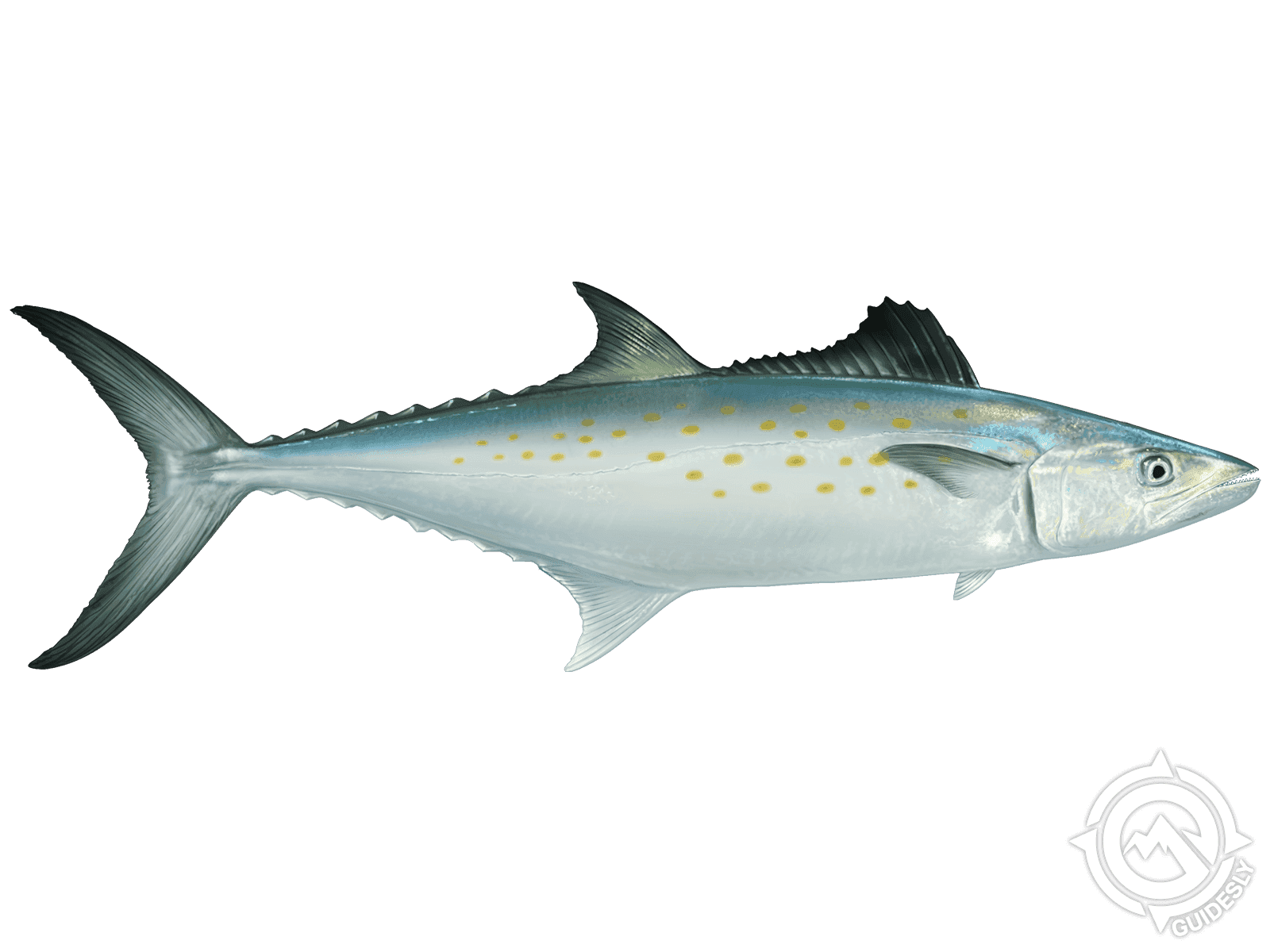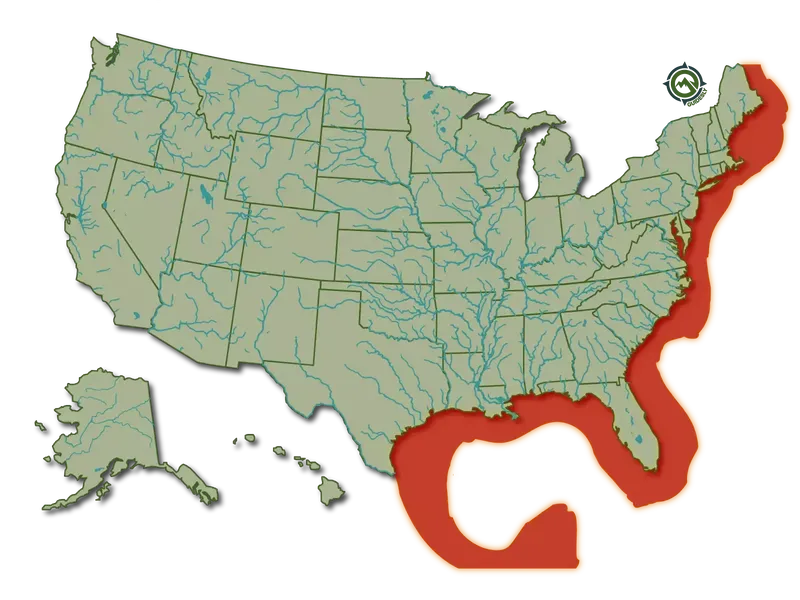Spanish Mackerel

Species Details
Scomberomorus Maculatus
Scombridae
Perciformes
offshore, onshore, nearshore
8 - 120 lbs.
20" - 72"
What is the best bait for Atlantic Spanish Mackerel?
The best bait for Atlantic Spanish Mackerel fishing are live sardines or small jigs. When fishing for Spanish Mackerel, it's important to use a wire leader to prevent the sharp teeth of the fish from cutting through your line.
Spanish Mackerel (Scomberomorus maculatus)
Often found both coasts of Florida and the Gulf of Mexico, the Spanish Mackerel (Scomberomorus maculatus) is a favorite fishing target for both recreational and commercial fishers. It can be easily identified with its long, streamlined body, silvery color with a dark greenish top, and yellowish oval spots scattered on its sides. They are speedy swimmers and can often be seen in large groups or schools. They also migrate from the northern part of the Atlantic coast to as far south as Mexico during winter. They can, however, be found in pretty much every ocean in the planet.
Spanish Mackerels are carnivores and usually prey on prey mainly on herring, menhaden, sardines, mullet, needlefish, and anchovy and, sometimes, even on shrimp, crabs, and squid. On the other hand, same as their close relatives like tuna and other mackerels, they are preyed upon by dolphins, sharks, and of course, humans.
The Spanish Mackerel is a highly valued fish for both sports fishers and commercial fishers because of its tasty meat that can be cooked by grilling, frying, baking, and even by smoking. It’s also a popular fish in Japan and other countries as it can be eaten raw as sushi.
Interesting Facts About Spanish Mackerel
- The biggest Spanish Mackerel ever caught measures a little over six feet long and weighs about one hundred and twenty pounds.
- Angler Doug Buhagiar with the help of his brother caught the humongous fish on the beach on Fraser Island off Australia’s eastern Queensland coast.
- Spanish Mackerels are one of the fastest swimmers in the ocean, clocking at about 5.5 meters per second on average.
- They swim in large groups or schools that can stretch up to 20 miles.
- They can live up to twenty-five years in the wild.
- As with other mackerel species, Spanish Mackerels are often caught for food.
- They can be cooked in various methods, including: baking, grilling, steaming, smoking, poaching, and frying.
- The Spanish Mackerel is also a popular sushi fish.
- They are a source of omega-3 fatty acids in human diet.
- High human consumption meant high demand for the fish, thus, led to overfishing and a significant fish population decline over the past few decades.
- Fishing restrictions were made to help repopulate oceans with this particular fish species.
- Annual catch limits are divided between the commercial and recreational fishers in both the Atlantic and Gulf of Mexico.
- Minimum size restrictions are also placed to provide the species time to mature and spawn.
- Since the regulations, Spanish Mackerel populations have significantly improved.
- Females can lay 500,000 to 1.5 million eggs throughout the spawning season.
- Their eggs float in the water because they contain oily drops.
- For fertilization, the eggs merge with sperm cells that are released by males.
Spanish Mackerel Average Speed and Size
Clocking in on average at 5.5 meters per second, the Spanish mackerel is one of the fastest and most agile fish species in the ocean. They can also mature and grow really fast, reaching their full maturity in just two years. An adult measures about one to two feet in length and weighs around eight to eleven pounds.

Where to Find Them
Many successful anglers have caught Spanish Mackerels by trolling or drifting on boats. Others have also been successful fishing on piers, jetties, and beaches by casting spoons and jigs and live-bait fishing. They can often be found in large schools swimming near the surface of the water. Although, this fish live mainly in tropical and subtropical waters, it can sometimes be seen in temperate waters as well.
Spanish Mackerel Fishing Tips
If you’re going to be fishing offshore, look around structures in the open waters where schools of Spanish Mackerels are often seen. Just make sure to drift to the area where they are so as not to spook the school of fish away. For nearshore fishing, again check around structures in open waters, including flats and oyster bars. In a warmer weather, schools are often spotted closer to shores. So you might want to stay on land and fish in the surf, piers, and jetties when the water warms.
As for the gears you’re going to need, here are some of our recommendations:
Equipment
- Light to medium spinning tackle
- Medium 7 to 8-foot rod
- 12-20 lb. braided line
- 1/0-2/0 circle hook that matches bait size
Lure
- Heavy metal lures, shiny spoons
- Plastics with jig heads
Bait
- Live shrimp and fish such as sardines, minnows, mullet, and greenbacks
- Cut bait such as squid
Is Spanish Mackerel Good to Eat?
When it comes to delicious fish that is versatile in flavor and texture, Spanish Mackerel is at the top of the list. This fish is a great ingredient to cook with and offers many different options for tasty dishes. It has a mild flavor that is not too fishy. When cooking with Spanish Mackerel, it can be grilled, baked, or even smoked, which makes it an excellent choice for different cuisines. The texture of this fish is also quite unique, as it is both flaky and tender at the same time. Whether you want to fry it up for a crispy meal or use it in a stew, there are many possibilities when it comes to preparing Spanish Mackerel.
Besides being a delicious and versatile fish, Spanish mackerel is also a healthy option for your diet. It is packed with essential nutrients such as omega-3 fatty acids and protein, which can improve heart health and provide energy.






